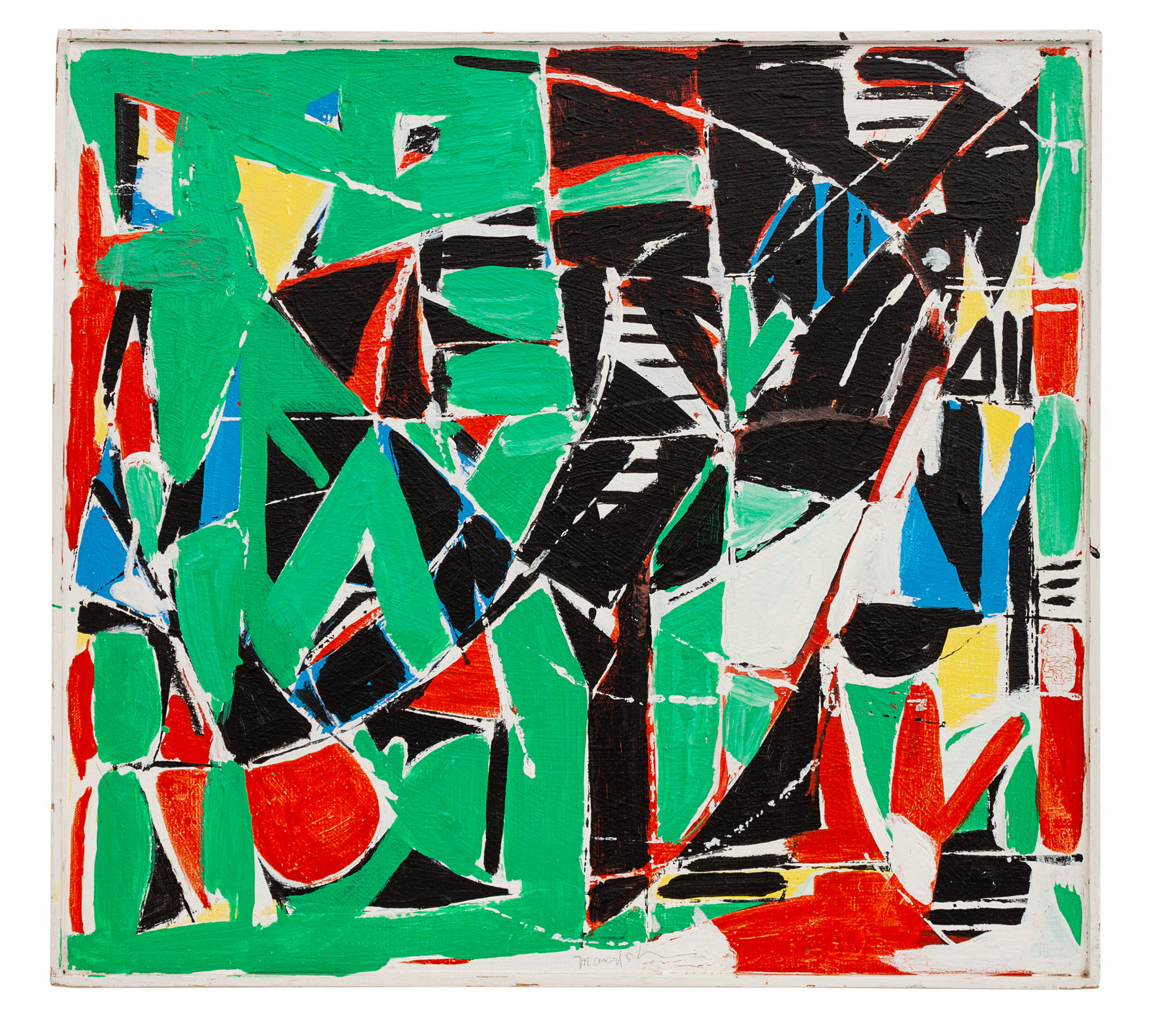Beatrice Mandelman (1912-1998)
If Beatrice Mandelman (1912-1998) had remained in New York City, she would long since have joined the art historical canon alongside Lee Krasner, Helen Frankenthaler, Joan Mitchell and other famous female New York School painters, not to mention their male contemporaries. This would likely also be true for Bea’s husband, fellow artist Louis Ribak (1902-1979.)
Mandelman was born across the Hudson in New Jersey, and was an active participant in the city’s bubbling modernist ferment. She studied in Paris with Fernand Léger, hung out with Willem de Kooning and Arshile Gorky, and she even vacationed with Jackson Pollock. But in 1944, just as the New York scene was emerging into international consciousness, making household names of many of their friends and essentially giving birth to the artworld as we now know it, Mandelman and Ribak decamped to New Mexico, where they became seminal members of the intense, vibrant milieu known as the Taos art colony.

Lot 178 Beatrice Mandelman (American, 1912-1998)
Jazz II- Spring (1725) , acrylic on canvas
Rough, ready, and remote, Taos had been discovered a few decades earlier by a handful of artists from Chicago, New York, and Europe who utilized their classical academic training to heroically depict “cowboys and Indians” for a national, populist audience. The Taos Society painters didn’t necessarily let cultural or historical accuracy stand in the way of a good picture, and few of them had much sympathy for the modernist revolution that had already utterly transformed art in Berlin, Vienna, and Paris. But they nevertheless paved the way for subsequent waves of artists who not only employed the new modern aesthetics, but also included women – like Georgia O’Keeffe, and later, Bea Mandelman.
By 1947, she and Ribak founded the influential Taos Valley Art School, which not only became a hub for the modern art community there, but drew avant-garde artists from both coasts. When the school was forced to close after funding dried up in 1953, the couple briefly moved back to New York, and while they continued to travel extensively throughout their lives, Mandelman mostly lived in and took inspiration from the majestic, high-altitude light and space of her adopted Taos homeland, working there steadily and exuberantly until her death from cancer in 1998. Like fellow émigrés O’Keeffe and her good friend Agnes Martin, Bea realized herself in this region, becoming a quintessentially New Mexican artist. It’s high time that more people outside of that state were familiar with her work.

Lot 177 Beatrice Mandelman (American, 1912-1998)
50-Col-2-20/Sunshine, gouache and collage on paper
Her impressive artistic development and prolific output tracks the trajectory of many of her contemporaries. Fundamental classical training evolved by incorporating the roiling stylistic and technical innovations that poured forth first from Europe, then took flight stateside. In earlier examples, you can see her pictures go from Ashcan School to Social Realist to Expressionist to Post-Cubist, then settle steadily into the so-called Abstract Expressionism that most aptly encompasses her mature style. However, even then strains of Color Field Painting, New Mexican Transcendentalism, Minimalism, Hard Edge, Op and even Pop Art can be discerned. She clearly kept tabs on what was going on around her, while defiantly going her own way. Thankfully, Bea had little use for conceptual Post-Modernism, and her mature work is distinguished by a confident ebullience and bold, musical lyricism that are all her own. Mandelman remained a dedicated high modernist, holding fast to rigorous non-objective formalism, ambitiously exploring its endless possibilities for decades. While any artwork necessitates facility or at least an awareness of both, painters can often be loosely classified as colorists (emphasizing hue and chroma, á la Mark Rothko) or structuralists (composition the primary concern, like Franz Kline.)

Lot 179 Beatrice Mandelman (American, 1912-1998)
Sun Series B-21, acrylic on canvas
Bea is harder to pigeonhole. Her concerns appear to drift steadily back and forth between these polar emphases, and her hundreds of documented paintings, prints, and collages reveal a restless freedom to pursue whatever impulse drifted through her studio window, down from the perpetually breathtaking Sangre de Christo peaks that loom over Taos. Yet the work, often produced in tight series, still always demonstrates a quality of focused investigation. She paid for this kind of liberty by remaining lesser known and physically isolated from major urban art centers, taking advantage of the literal and metaphoric distances to elude certain inevitable pressures to conform to expectations – of peers, or the market. Mandelman was a modern artist to the bone, independent and committed to art for its own sake.